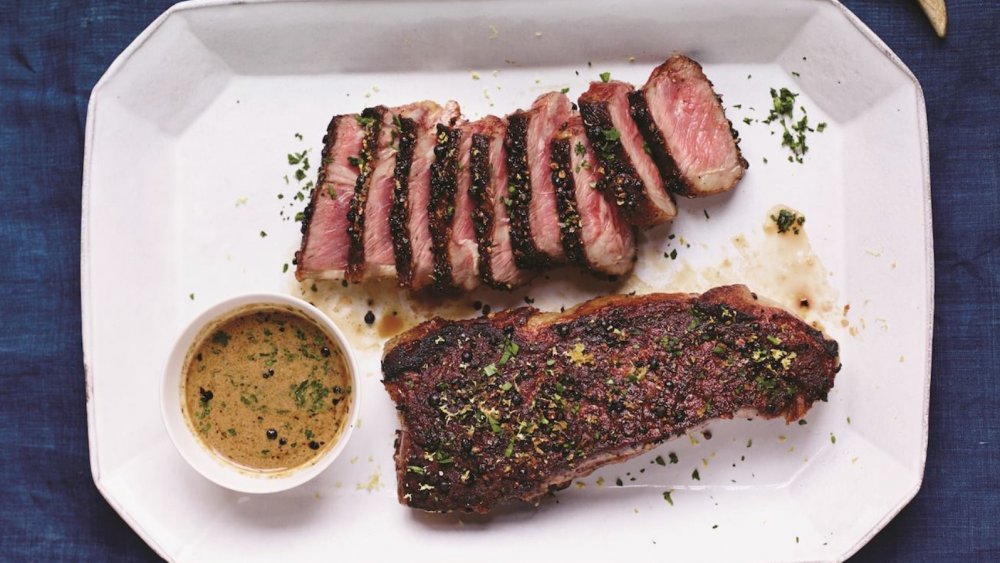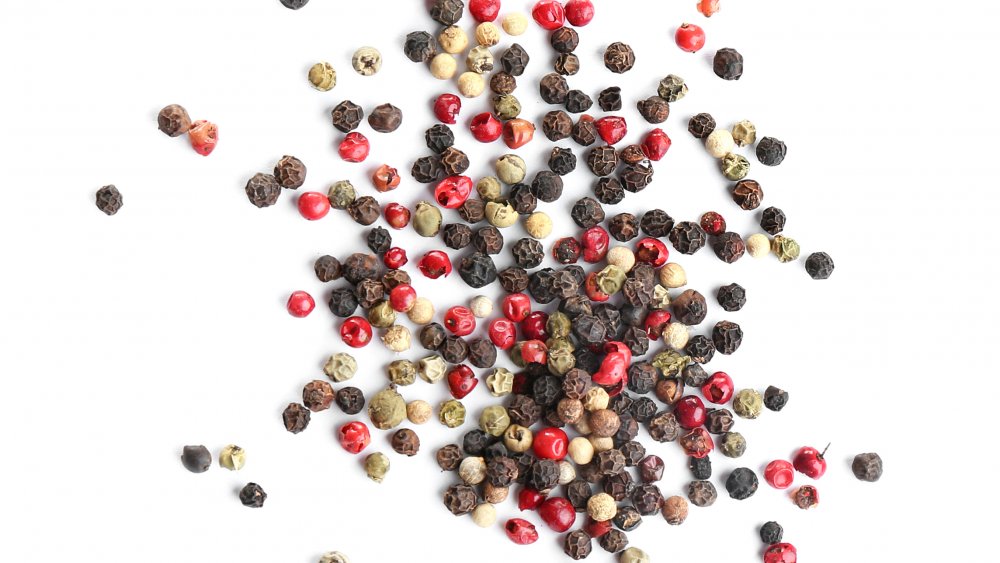The Real Difference Between Regular Steak And Steak Au Poivre
Want to impress your friends and family with an impossibly fancy-sounding dish that really isn't all that complicated? Invite them over for steak au poivre. Pronounced oh-pwav, according to the American Pronunciation Guide clip on YouTube, this dish is simply steak crusted in cracked peppercorns and sautéed. Often, it is accompanied by a creamy sauce that complements and mellows the pungent peppercorn flavor.
The origin of the dish isn't clear. Some say it was served in the bistros of 19th century Normandy. In 1950, chef Émile Lerch claimed to have invented steak au poivre in 1930 while working at Paris's famous Restaurant Albert. Lerch said it was inspired by a shipment of lackluster, frozen American beef, which he coated in peppercorns to add flavor (via Taste Atlas). After Lerch's statement, a flurry of chefs from other Parisian restaurants called him out, each claiming ownership of the idea. The origin story remains unsettled (via Cook's Info).
Although the classic cut of beef for this dish is filet mignon, any boneless steak can be prepared au poivre, including boneless ribeye, strip steak, or sirloin. Because pepper is such an important part of the dish (about one teaspoon of whole peppercorns per steak, according to Cook's Info), it's good to splurge on high quality peppercorns. And there is no reason to restrict yourself to solely black peppercorns. Allen Schumann of the former Lobster Bar Sea Grille in Miami Beach, Florida uses a combination of black, pink and green varieties (via The Manual).
Variations on classic peppercorn steak
To make the peppercorn crust, Food Network's Alton Brown advises crushing the peppercorns with a light hand. They should be "just-cracked" into big pieces, so it's best to use a mallet, or mortar and pestle, but not a pepper grinder. Spread the cracked peppercorns onto a plate, generously season the steaks with Kosher or sea salt, and press them into the peppercorns. The steaks are then sautéed in butter and olive oil over medium heat. These steaks can be served straight from the sauté pan or kept warm, then served with a classic au poivre sauce made from pan drippings, liquor, and cream (via The Manual).
After pouring off the excess fat, the liquor is used to deglaze the pan. Many, including Brown, use Cognac or another brandy; Sous Vide Everything chef Guga Tosta uses bourbon. Julia Child and Jacques Pépin said red wine is just fine, too (via Cook's Info). The cream is added, brought to a boil over medium heat, and whisked until it is thick enough to coat a spoon. There are many variations on the cream sauce. Epicurious adds shallots and butter to the basic recipe, and Serious Eats includes thyme and garlic.
Delia Smith eschews cream, says Cook's Info, arguing for the addition of five ounces of wine to the pan, and reducing it by one-third. With the richness of the meat and the intensity of the peppercorns, this simple sauce is all this flavorful dish needs.

